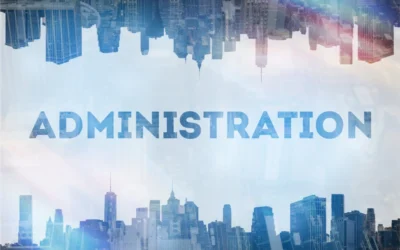There is no doubt the coronavirus pandemic has impacted financial decisions many workers made during 2020. As the primary means of saving for retirement, 401(k) post pandemic balances were adversely hit by the impact of these decisions. Some employees tapped into their savings by taking a loan or distribution from their accounts. Even more, they cut back or eliminated their contributions, as did their employers in an attempt to weather the storm. Markets began tumbling precipitously in March of 2020, and some participants panicked and took their savings out of the market.
With the volatility and uncertainty of the economic and political climates, they were unwilling to get back in and potentially cost themselves the opportunity to recuperate the losses they incurred more quickly.
As we approach the halfway point of 2021, more and more Americans are getting vaccinated, businesses are reopening or increasing output, and unemployed or working remote employees are returning to the workplace.
In the midst of the “new normal,” plan sponsors have been taking stock of how the pandemic has impacted their 401(k) plan participants, and many are asking, “how can we help our employees get back on track to a secure financial future?” The simple answer is to help employees save more, but what are some practical steps that employers can take to make that happen?
What to Do With Your 401(k) Post Pandemic
The first step in dealing with the emotional consequences that the negative financial impacts on savings may have had on participants so that they feel comfortable investing in their financial future. In particular, fear of the markets and the stress of their volatility needs to be addressed. Plan sponsors can work with their financial advisors and recordkeepers to demonstrate how markets have recovered from past crises (including this one) and provide examples of how “staying the course” has continually worked for savers in the past. Unless a participant’s fears of being in the market are addressed, nothing else a sponsor does to help them save will matter.
Part of getting participants comfortable saving for retirement post pandemic is reminding them of and highlighting some of the safety nets that are already in place or available to them on a voluntary basis as an employee of the company. Benefits such as health insurance, short- and long-term disability, paid leave, child care reimbursement, supplemental health insurance, and life insurance are a vital components in an employee’s financial wellbeing. A thorough understanding of these benefits can give employees confidence that some “emergencies” are already being addressed which gives them the confidence they need to save more for retirement.
Fringe benefits cannot address all financial emergencies. One thing that the pandemic brought to light was the lack of emergency savings that workers have available. In fact, at present, many workers could not even weather a $1,000 emergency expense. Consequently, more and more employers are allowing their employees to make employee after-tax (not Roth 401(k)) contributions to the 401(k) plan on a per payroll basis as a way for employees to build up an emergency fund in the 401(k) plan. These contributions can be voluntary or required and need not be subject to the same withdrawal restrictions as regular and Roth 401(k) contributions are. Most importantly, they can be withdrawn at any time on a tax free basis (the earnings would be subject to taxation). Employees can quickly establish or rebuild an emergency fund by saving just a little bit every paycheck via these after-tax contributions. In addition, employers can match these after-tax contributions the same way they match regular 401(k) contributions (formula can be identical or different), thereby helping employees save for retirement while the employees save for an emergency.
How to Help Your Employees Save For an Emergency Post Pandemic
This approach to emergency savings has a number of advantages. First, it happens automatically and relatively painlessly. Second, because the funds are in the 401(k) plan, they are not as susceptible to spur of the moment emotional decisions or use of a debit card and as a result, more likely to be available in a financial emergency. Third, the cost and fees of investing a small amount or maintaining a small balance is substantially less with significantly more conservative investment alternatives than would be available in a standard savings account. Fourth, it may expose employees who do not currently save for retirement to the 401(k) plan and increase their motivation to begin participating. Finally, once a suitable level of emergency funding is reached, these contributions can easily be converted to 401(k) contributions (regular or Roth) and those funds not used for an emergency are already in a retirement savings vehicle.
Plans that are using this approach are seeing a couple of significant benefits. First, when an employee knows they have an emergency fund, they feel more comfortable saving for retirement. Second, the demand to access retirement savings via loan or hardship distribution is significantly reduced.
How to Address Emotional Road Blocks in 401(k) Plans Post Pandemic
Having addressed some of the emotional roadblocks to saving for retirement, employers can also take other steps to help participants rebuild their account balances at a faster pace. One group of participants in particular that sponsors should communicate with is participants who took out coronavirus related loans. These loans need to be repaid in three years and helping these participants plan to get the loan paid off ASAP will not only ease their tax burden but also help them rebuild their account.
For obvious reasons, some employers found it necessary to suspend employer matching contributions given the economic uncertainty of the pandemic. 2021 would be an excellent time to reinstate or even increase the match and highlight it for the employees. The immediate and guaranteed return of a matching contribution on an employee’s 401(k) deferral may be just the carrot an employee needs to get them to restart their savings.
How to Leverage Automatic Enrollment in Your 401(k) Plans
Perhaps the most impactful tool an employer can bring to bear on a current plan’s participant savings rates is implementing automatic enrollment. Automatic enrollment doesn’t need to be complicated, and many employers had already implemented it in their plan for new hires. By “restarting” the 401(k) plan (perhaps with a restarted or increased match) and automatically enrolling ALL participants at a meaningful level (5% or more), participants can get their savings back on track and begin the road to rebuilding their savings.
Finally, in developing a plan to get participants saving again, plan sponsors need to keep in mind they don’t need to go it alone. They can consult with their plan professionals (attorney, TPA, etc.) to determine which, if any, of these changes might make sense for their employees and plan. Financial advisors and recordkeepers are invaluable resources in developing and rolling out a communication and education strategy (and perhaps even a financial wellness program) that will engage participants and give them the confidence they need to start saving again. Employees need to know that every little bit they save helps and that over time small steps forward will get them back on the road to securing their financial future.
Contact Watkins Ross if you need assistance with your employee 401(k) plans.



